
|

|
|
Home Site Search Contact Us Subscribe
|
|
Resurrection: Architecture Rebuilds Community Connections in Memphis The site of a dying mall is reinvented with an assembly of public buildings and activities designed to create a critical mass of vibrancy and social cohesion. By Tom Marshall, AIA, LEED AP February 18, 2021 It has been estimated that more than 1,000 indoor malls across the American landscape are dead or dying. While this is often treated as a real estate problem, it is much more than that. Failing malls often become symbols for a failing urban area; that’s what happened in Raleigh, a suburb of Memphis, Tennessee. The decline of this community’s mall was a direct hit to an area’s pride, self-image, and self-confidence.
Because of that, my firm, O.T. Marshall Architects, was asked to work with the City of Memphis to consider what could be done with the tangible loss of the 918,000-square-foot Raleigh Springs Mall, set in a 68-acre site, whose more than 190 occupants had dwindled to only three. We considered our prime opportunities as extracting the intangible benefits of the mall site – the equity for the Raleigh area of Memphis for 45 years, its role as an important “third place” (where people spend time between home and work), and the connectivity it provided to the people in the area.
The answer was to transform the site into the Raleigh Springs Civic Center. The name was retained because of its historical value, dating back more than 100 years to when the mineral-rich springs attracted pilgrims to a nearby grand hotel to enjoy its medicinal values until it dried up around 1903.
While every project in Memphis is personal, this one had special meaning for me. I grew up in Raleigh, in a glass house designed by my architect-father, O.T. Marshall III. It was featured in national magazines as one of the first glass houses in the U.S., and received a national award from the American Institute of Architects.
In 1971, by the time I was 12 years old, I would ride my bike from that glass house to a hill near the mall site and watch it come out of the ground. It was the biggest thing to ever hit town as far as I was concerned. I watched my first crane in operation. When it opened, it became the place to spend the day looking for something to do. After all, it had a movie theater and an arcade.
It was a third place long before there was such a term. In this way, it was more than just a place to go. Rather, it was a community anchor that strengthened our connection to place and to each other.
By the time the mall was razed in 2017, it had become a community icon of a different sort. Its failure called into question the future of Raleigh itself. With no anchor store and the number of other stores dwindling to single digits, it sent the message to young people and middle class families that it was time to move.
So, what could be done at the site to send a different message, and how could its design create another community anchor to take the place of the one that was lost?
From this question came the mandate for a $45 million Raleigh Springs Civic Center, an assembly of public buildings and activities designed to create a critical mass of vibrancy and social cohesion.
In the community-driven planning process, it became clear that Raleigh residents needed a bragging point they could identify as a symbol of the “new” Raleigh, one that would attract and retain residents, and act as a magnet for new investments. It was in this process that an elderly woman asked for something that would keep young adults from leaving and give others a reason to visit. From that came the idea of a competition skate park – a place that provided young people a reason to visit – and return.
We already had decided that pending city government projects – a new library and new police precinct – would become elements of the site, but the skate park idea came up late. While there were skeptics that building a skate park and a police precinct adjacent to each other would result in conflict, we saw it as an opportunity for two groups subject to negative attitudes from some people to come together to create a social purpose that would benefit both.
Into the mix of the library, police precinct, and skate park, we added a mile-long walking trail as an homage to the walking opportunities the mall provided when it was on the site. In addition, a man-made 15-acre lake was adderd that doubles as a basin, flood retention, protecting more than 600 upstream homes from flooding. Three fountains aerate the water. We created hills to bring contour and undulation to the site.
A roundabout provides access points for the library and the police station, and its 86-foot diameter is being treated as a plaza where spontaneous dance practice is held, cheerleading events take place, and spontaneous games have popped up. The activities are made possible because parking is permitted on both sides which calms traffic, not to mention that cars travel more slowly because of the presence of the police station.
The walking trail engages with the buildings and naturalized areas. We laid out the 18,000-square-foot skate park, designed in an anthropomorphic configuration that neatly fits into the crook of the lake. I engaged Wormhoudt Incorporated, the premier skate park designer in the U.S., to design the core space within. The skate park became an instant draw. With no publicity or advance announcements, the lights were turned on to determine their operation, and immediately – skaters appeared! There was a constant beehive of activity. Nearby, the 38,000-square-foot police precinct is designed in symmetrical bold lines that allegorically reinforce the Memphis Police Department’s essential place in the community. By combining the traffic bureau and special operations, we were able to reduce costs by 28% by creating 10,000 square feet of common space instead of duplicating space in the functional areas. The radial surface of the precinct’s 3,000-square-foot motorcycle storage garage becomes a perfect screen for colored lights.
A short distance away, the city’s first “smart library” is curvilinear and asymmetrical in design, with shapes of colliding battered towers of glass shards. Its 17,500 square feet house the most technologically advanced library in the Memphis library system. Its two floors are defined by their flexibility and their linkages back to the civic center, including a second-floor balcony overlooking the lake. The library’s exterior is bathed in blue LED lighting.
Great libraries build great communities is the mantra of the Memphis Library System. This library is designed with that ambition in mind. It has traditional uses, but also for literacy programs, robotics, economic and workforce development programs, and a STEM program that includes a family learning lab. Based on our team’s suggestion, the library also houses a commercial kitchen on the second floor where classes on food literacy and healthy living will be conducted. It becomes a place where older Raleigh residents teach young families their traditional recipes, using food to create bonds between generations in Raleigh.
Unlike other Memphis libraries, the community room for 200 people does not have to be accessed through the library, removing the need for staff to remain after hours to open and close doors. There, choir practice, neighborhood association meetings, community events, and more will be held.
Sculptures by Memphis artist Yvonne Bobo complement the library interiors. Rather than buy commercial lighting, we took the same amount of money in the budget and commissioned her to design distinctive interior lighting. Outside, her sculptures entice walkers along the trail, including one of stainless steel with dichroic glass droplets that create a shimmery surface by reflections off the lake. The undulating sculpture leaping over the walking trail creates an iconic “welcome” to the civic center.
Already, the project has inspired renewed excitement in Raleigh and new interest in investment on the site. Encouraged by the overwhelming positive response and the reaction from the business community, the City of Memphis is issuing a Request for Proposals for development of the remaining 20 acres. To propel this investment, the city’s primary economic development agency, EDGE, has approved a Tax Increment Financing district for the area.
All in all, the design of the project is more than the sum of its individual elements. It is creating a new energy and new connections that can become the foundations for a new icon that will make the demise of Raleigh Springs Mall a fading memory.
After working for Edward Durell Stone Associates in New York City, Tom Marshall, AIA, LEED AP, joined his father’s firm, O.T. Marshall Architects, established in 1957. The award-winning architect has managed a number of highly complex projects where his skillful work with multidisciplinary consultants has been refined to a science. He firmly believes that creating viable economic solutions throughout the region is key in creating diverse and sustainable communities. These developments will have lasting positive effects on the surrounding neighborhoods and the Mid-South region. |
(click on pictures to enlarge)  Jeffrey Jacobs The Raleigh Springs Civic Center, which includes a public library (left), a police station (right), and a 15-acre man-made lake, replaced the 45-year-old Raleigh Springs Mall that had dwindled from more than 190 occupants to only three.  O.T. Marshall Architects Site plan  Jeffrey Jacobs The library is bathed in blue LED lighting that shimmers on the lake and supports nighttime walkers and runners.  Jeffrey Jacobs The Raleigh police precinct’s formalized structure speaks to its culture and purpose.  Jeffrey Jacobs A roundabout acts as a connecting feature for the library on the left, and the police precinct on the right; parking is available on both sides.  Jeffrey Jacobs The 18,000-square-foot skate park’s popularity became clear when people began skating while the lighting was being tested before the official opening.  Jeffrey Jacobs Many in the Memphis skater community have dubbed the Raleigh skate park the “Millennium Falcon” because of its resemblance to the starship of Star Wars fame.  Jeffrey Jacobs A stainless-steel sculpture by Memphis artist Yvonne Bobo arcing over the walking trail creates an iconic “welcome” to the civic center. 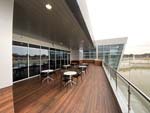 Jeffrey Jacobs A balcony that is unique in Memphis libraries is perfect for special library receptions and city government events. 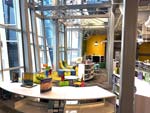 Jeffrey Jacobs Memphis sculptor Yvonne Bobo designed lighting at the same price as budgeted for commercial lighting. 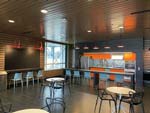 Jeffrey Jacobs The library in Raleigh is the only one in Memphis with a commercial kitchen designed to encourage intergenerational relationships around food literacy and healthy living..  Jeffrey Jacobs The airiness of the library is designed to bring the outside in with an emphasis on comfort. 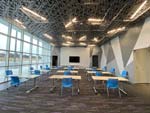 Jeffrey Jacobs The expansive community room in the library, which overlooks the lake, can accommodate 200 people for neighborhood association meetings choir practice, and community events. 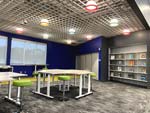 Jeffrey Jacobs The small meeting room is designed with classes, crafts, and collaboration in mind. 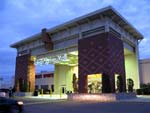 E.W. Scripps' Commercial Appeal The front door of the Raleigh Springs Mall was a major Memphis event when it opened its 918,000 square feet in 1971. Forty-five years later, when the mall had only three tenants left, the City of Memphis bought the property in 2016 for a neighborhood civic center.  Jeffrey Jacobs The Raleigh Civic Center site offers 20 acres for new, mixed-use development. |
© 2021 ArchNewsNow.com